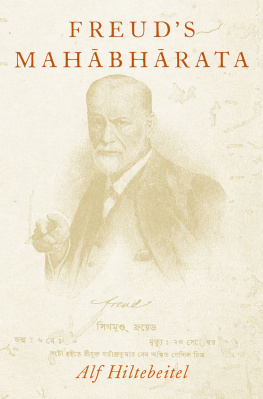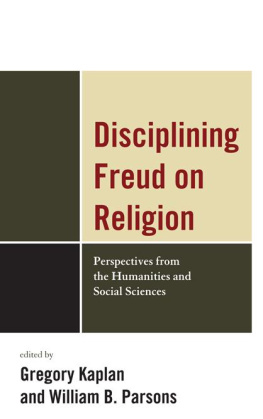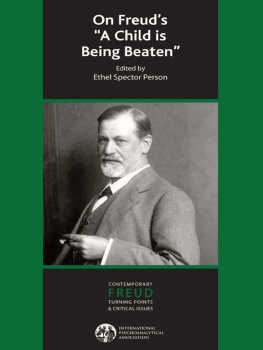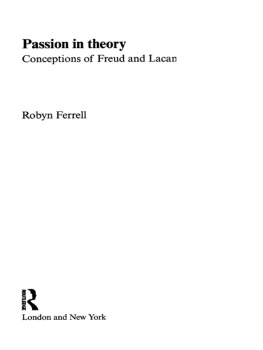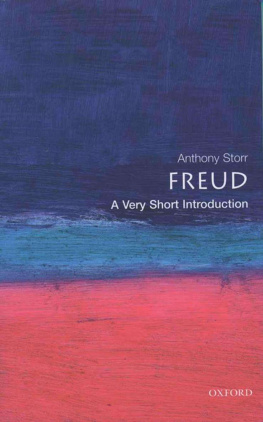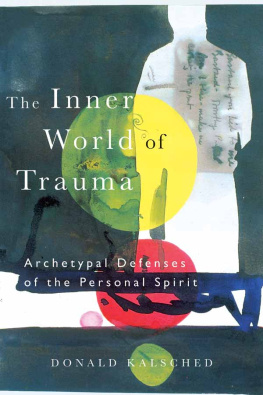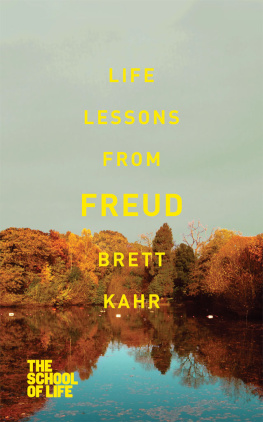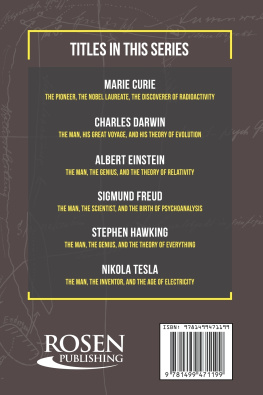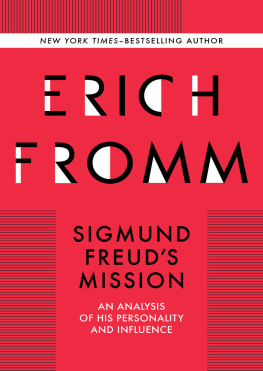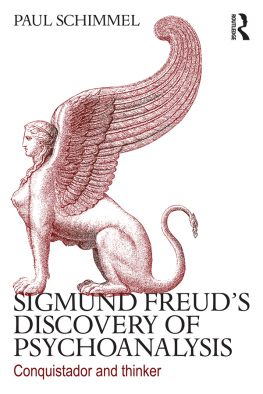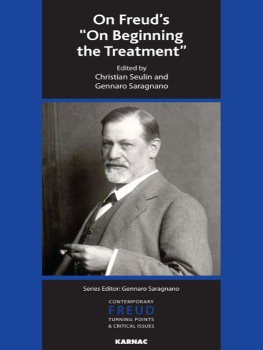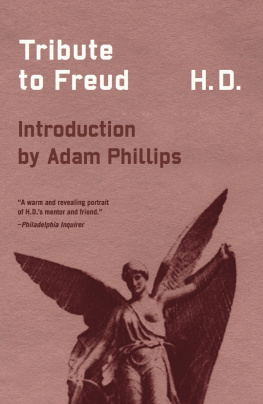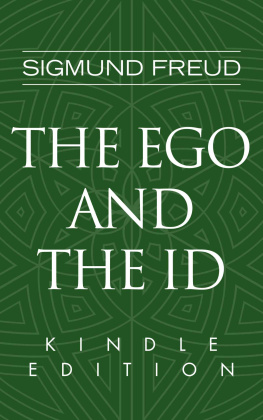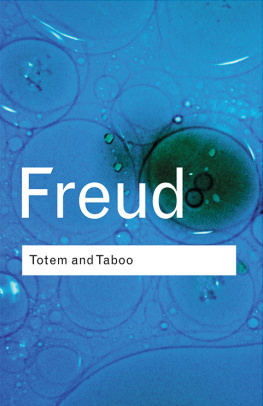Freud Sigmund - Freuds Mahābhārata
Here you can read online Freud Sigmund - Freuds Mahābhārata full text of the book (entire story) in english for free. Download pdf and epub, get meaning, cover and reviews about this ebook. City: New York, year: 2018, publisher: Oxford University Press USA - OSO, genre: Detective and thriller. Description of the work, (preface) as well as reviews are available. Best literature library LitArk.com created for fans of good reading and offers a wide selection of genres:
Romance novel
Science fiction
Adventure
Detective
Science
History
Home and family
Prose
Art
Politics
Computer
Non-fiction
Religion
Business
Children
Humor
Choose a favorite category and find really read worthwhile books. Enjoy immersion in the world of imagination, feel the emotions of the characters or learn something new for yourself, make an fascinating discovery.
- Book:Freuds Mahābhārata
- Author:
- Publisher:Oxford University Press USA - OSO
- Genre:
- Year:2018
- City:New York
- Rating:5 / 5
- Favourites:Add to favourites
- Your mark:
- 100
- 1
- 2
- 3
- 4
- 5
Freuds Mahābhārata: summary, description and annotation
We offer to read an annotation, description, summary or preface (depends on what the author of the book "Freuds Mahābhārata" wrote himself). If you haven't found the necessary information about the book — write in the comments, we will try to find it.
Freuds Mahābhārata — read online for free the complete book (whole text) full work
Below is the text of the book, divided by pages. System saving the place of the last page read, allows you to conveniently read the book "Freuds Mahābhārata" online for free, without having to search again every time where you left off. Put a bookmark, and you can go to the page where you finished reading at any time.
Font size:
Interval:
Bookmark:


Oxford University Press is a department of the University of Oxford. It furthers the Universitys objective of excellence in research, scholarship, and education by publishing worldwide. Oxford is a registered trade mark of Oxford University Press in the UK and certain other countries.
Published in the United States of America by Oxford University Press
198 Madison Avenue, New York, NY 10016, United States of America.
Oxford University Press 2018
All rights reserved. No part of this publication may be reproduced, stored in a retrieval system, or transmitted, in any form or by any means, without the prior permission in writing of Oxford University Press, or as expressly permitted by law, by license, or under terms agreed with the appropriate reproduction rights organization. Inquiries concerning reproduction outside the scope of the above should be sent to the Rights Department, Oxford University Press, at the address above.
You must not circulate this work in any other form and you must impose this same condition on any acquirer.
CIP data is on file at the Library of Congress
ISBN 9780190878337
eISBN 9780190878351
is titled Moses and Monotheism and the Mahbhrata: Trauma, Loss of Memory, and the Return of the Repressed. As the third part of the book, it provides the payoff, explaining what is suggested by the title. Drawing on all preceding chapters, it offers a new theory of the Mahbhrata that can be called Freuds Mahbhrata because he inspired it.
As to the Mahbhrata, it is the great epic of India, both in its baseline text of the Poona Critical Edition and in the Mahbhrata tradition as it unfolds. Thus, I single out three different Mahbhratas that I have come to study. That is, since 2011, I have made a distinction between text and tradition, pointing out that the tradition begins with the earliest known Sanskrit interpolations in the baseline text that are traceable to the epics Southern recension. I thus now call the baseline version, derived mainly from the epics Northern recension, the text, leaving all subsequent manuscript-based texts, beginning with the Southern recension, as tradition. My usage follows up on the work of T. P. Mahadevan, although he does not use text and tradition in this sense.
Thus, the study of the Mahbhrata text and tradition in these forms has involved me in one type of Mahbhrata study that must be done in Sanskrit, which I have been doing since 1967 in my dissertation, and which I continue to work on to this day. The Mahbhrata tradition also unfolds in other Sanskrit formsfor instance, in the Puras, one of which, the Bhaviya Pura (Purana of the Future), has a lengthy unit called the Ka-Carita (Deeds of the Portion of Krishna), who, it is said, incarnated on earth with a portion of himself to become a hero named Udal in the Mahbhrata of the Kali-yuga, called the lh. This oral epics retelling in Sanskrit is probably a mid-nineteenth-century translation from the Hindi vernacular. I translated the Ka-Carita from Sanskrit into English in 1997, as the basis for five chapters of my 1999 book on Indias regional oral epics. That book delved as extensively as I could into Indias rich and diverse vernacular Mahbhrata traditions, which are found in every language of the subcontinent. Among the latter are two folk traditions found in Tamil cults: the Draupad and Kttavar cults, each with its own, very different distillation of the Mahbhrata tradition. Each is expressed in folkloric narrative or myth, ritual, iconography, and drama.
These two cults yield the other two Mahbhratas that I reflect on in this book. One can be called the Draupad cults Mahbhrata, which I have studied since 1975 with my wonderful fieldwork interpreters and assistants. The first such co-worker was C. T. Rajan, with whom I worked steadily from 1975 to 1988. Then, in 1990, I worked with my former undergraduate student Lee Weissman, who was researching his dissertation at the University of Chicago, and the Swiss folklorist Eveline Masilamani-Meyer, both superb at Tamil. The rhythm-and-blues singer J. Rajasekharan accompanied me on field trips, when available, from 1990 to 1994. S. Ravindran worked with me from 1994 to 2004, and from 1998 as a graduate student in anthropology at Columbia University. And Perundevi Srinivasan, first as my Human Sciences graduate student at George Washington University, and then from 2008 as a colleague at Rutgers University, Claremont Colleges, and Sienna College, accompanied me to Dharmapuri District for a stretch every summer from 2000 to 2011, and continues now as co-author of the book she and I are writing about the Draupad cult in Dharmapuri District.
The other, and third Mahbhrata, is the Kttavar cults Mahbhrata studied with C. T. Rajan in 1982; with Professor E. Sundaramurti of the Department of Tamil Literature at the University of Madras, in Coimbatore and Salem Districts; with J. Rajasekharan and Lee Weissman in 1990 at its festival in Kvkkam village, with follow-up fieldwork there done with Rajasekharan and S. Ravindran from 1991 to 1994, and with Ravindran at the Singanallur Kttavar festival in Coimbatore city in 1995.
Along with offering these further acknowledgments, my point here is to zero in on the period from 1990 to 1992 as the most formative phase of my work in terms of getting where I am now. As in Freuds India, in whose preface I wrote a personal, family history in vignettes that occasionally recalled Freuds life but was about my own, and about experiences relevant to the subjects of that book, I do something similar in this preface. In this case, though, I discuss the problems I faced in trying to juggle work on these three Mahbhratas during that two-year period, which occurred after my father had died in 1984 and while my wife was leaving me, before our amicable divorce in 1993. What I wrote about my fathers death in Freuds India included that I was forty-two (just as Freud was forty-one when his father died); and when I published my first book on the Draupad cult in 1988, about the cults mythologies, I dedicated it in memory of my father who taught us to see. He died during the year I had begun writing that book, and my dedication expressed as best I could all that it owed to him. From this point, for a few pages, I hope you will forgive me the immodesty of engaging in the trope of the Historian of Religions as a hero for sticking to his work.
So, in this book I first discuss the Mahbhrata of the Sanskrit text and its Sanskrit textual traditions. During that 199092 period, after fifteen years of concentrating more and more intensely on fieldwork on Tamil cults and culture, I was beginning to feel the need to get back to the Sanskrit texts, from which I had grown to feel more and more estranged, and insecure about my Sanskrit, which I had not seriously worked with since 1981. In 1995, Jim Fitzgerald helped me immensely to refurbish my Sanskrit by sending me Muneo Tokunagas machine-readable transliteration of the Mahbhrata, from the Poona Critical Edition. It gave me a new agility to whiz around the text that I had never imagined possibleone that seemed at first to be cheating on it. By 1997, though, I was able to translate the
Font size:
Interval:
Bookmark:
Similar books «Freuds Mahābhārata»
Look at similar books to Freuds Mahābhārata. We have selected literature similar in name and meaning in the hope of providing readers with more options to find new, interesting, not yet read works.
Discussion, reviews of the book Freuds Mahābhārata and just readers' own opinions. Leave your comments, write what you think about the work, its meaning or the main characters. Specify what exactly you liked and what you didn't like, and why you think so.

